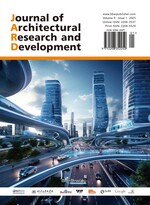Abstract
As the cost of grouting treatment for water control in coal roofs during underground coal mining continues to rise, coupled with the accumulation of industrial solid waste resulting from rapid economic development in China, the ecological environment is facing severe challenges. To address these issues, this study, based on a high water-to-cement ratio, uses mine overburden (OB) and furnace bottom ash (FBA) as the primary raw materials, with sodium silicate as the modifier, to develop a new type of geopolymer grouting material with high stability and compressive strength for coal roof water control. Additionally, COMSOL software was used to numerically simulate the diffusion process of the grout slurry in fractures under dynamic water flow. The results indicate that, with a sodium silicate modulus of 1.5 and a dosage of 4%, the stability of the slurry increased by 26.2%, and the 28-day compressive strength improved by 130.98%. Numerical simulations further show that the diffusion process of the slurry is closely related to slurry viscosity, grouting pressure, and grouting time and that the diffusion pattern in the fractures is similar to that of ultra-fine cement slurry. This study provides a theoretical basis for coal mine roof grouting water control projects.
References
Tian S, Wang Y, Li H, et al., 2024, Analysis of the Causes and Safety Countermeasures of Coal Mine Accidents: A Case Study of Coal Mine Accidents in China from 2018 to 2022. Process Safety and Environmental Protection, 187: 864–875.
Lacoue-Labarthe T, Nunes PALD, Ziveri P, et al., 2016, Impacts of Ocean Acidification in a Warming Mediterranean Sea: An Overview. Regional Studies in Marine Science, 5: 1–11.
Han S, Chen H, Long R, et al., 2017, Evaluation of the Derivative Environment in Coal Mine Safety Production Systems: Case Study in China. Journal of Cleaner Production, 143: 377–387.
Yang R, Li Y, Guo D, et al., 2017, Failure Mechanism and Control Technology of Water-Immersed Roadway in High-Stress and Soft Rock in a Deep Mine. International Journal of Mining Science and Technology, 27(2): 245–252.
Yang W, He S, 2022, Coal Mine Safety Management Index System and Environmental Risk Model Based on Sustainable Operation. Sustainable Energy Technologies and Assessments, 53(C): 102721.
Liu Q, Dou F, Meng X, et al., 2021, Building Risk Precontrol Management Systems for Safety in China’s Underground Coal Mines. Resources Policy, 74(C): 101631.
Li X, Zhang S, Ren R, et al., 2024, Comprehensive Evaluation and Spatial-Temporal Evolution Characteristics of Urban Resilience in Chengdu-Chongqing Economic Circle. Chinese Journal of Population, Resources and Environment, 22(1): 58–67.
Zhang J, Guan X, Li H, et al., 2017, Performance and Hydration Study of Ultra-Fine Sulfoaluminate Cement-Based Double Liquid Grouting Material. Construction and Building Materials, 132: 262–270.
Tang L, Wang Z, Zhang X, et al., 2023, Influence of Rheological Parameters on Cement Slurry Penetration Characteristics of Novel Oscillating Grouting Technology. Construction and Building Materials, 2023: 409.
Li Y, Chen M, Shi Q, et al., 2024, Biomass Fractionation Techniques Impact on the Structure and Antioxidant Properties of Isolated Lignins. Separation and Purification Technology, 330: 125499.
Wang J, Wang Y, Yu J, et al., 2022, Effects of Sodium Sulfate and Potassium Sulfate on the Properties of Calcium Sulfoaluminate (CSA) Cement Based Grouting Materials. Construction and Building Materials, 353: 129045.
Yang Y, Wang J, Dou H, 2014, Mechanical Properties of Anti-Seepage Grouting Materials for Heavy Metal Contaminated Soil. Transactions of Nonferrous Metals Society of China, 24(10): 3316–3323.
Wang M, Wang C, Yu J, et al., 2021, Investigation of the Grouting Effect of Blast Furnace Slag-Based Mortar on Void Road Bases Based on the Grouting Simulation Test. Construction and Building Materials, 282(4): 122567.
Li M, Bao S, Zhang Y, et al., 2024, Preparation and Characterization of Low-Activity Coal Bottom Ash-Based Cementitious Materials via Orthogonal Experiment. Journal of Building Engineering, 2024: 96.
Bakhrakh A, Solodov A, Naruts V, et al., 2017, High-Performance Self-Compacting Concrete with the Use of Coal Burning Waste. IOP Conference Series: Earth and Environmental Science, 90: 12213.
Pawluczuk E, Kalinowska-Wichrowska K, Jimenez JR, et al., 2021, Geopolymer Concrete with Treated Recycled Aggregates: Macro and Microstructural Behavior. Journal of Building Engineering, 2021: 44.
Fan G, Zhang D, Wang X, 2014, Reduction and Utilization of Coal Mine Waste Rock in China: A Case Study in Tiefa Coalfield. Resources Conservation & Recycling, 83: 24–33.
Yatsenko EA, Ryabova AV, Vil’Bitskaya NA, et al., 2022, Eco-Geopolymers Based on CHP Plant Ash-Slag Waste: Promising Materials for Road Construction in the Arctic Zone. Glass and Ceramics, 78(11–12): 490–493.
Buch-Hansen M, 1997, Environment—A Liability and an Asset for Economic Development: Some Views on Environmental Protection with Economic Development in Bhutan. International Journal of Sustainable Development & World Ecology, 4: 17–27.
Buchdahl JM, Raper D, 2015, Environmental Ethics and Sustainable Development. Sustainable Development, 2015: 6.
Ren C, Li KQ, Wang Y, et al., 2023, Preparation and Hydration Mechanisms of Low Carbon Ferrochrome Slag-Granulated Blast Furnace Slag Composite Cementitious Materials. Materials, 2023: 16.
Rao AP, Rao AV, Pajonk GM, 2007, Hydrophobic and Physical Properties of the Ambient Pressure Dried Silica Aerogels with Sodium Silicate Precursor Using Various Surface Modification Agents. Applied Surface Science, 253(14): 6032–6040.
Bilondi MP, Toufigh MM, Toufigh V, 2018, Experimental Investigation of Using a Recycled Glass Powder-Based Geopolymer to Improve the Mechanical Behavior of Clay Soils. Construction and Building Materials, 170: 302–313.
Wang C, Zhao L, Guo Z, et al., 2024, Mechanistic Study of Fly Ash Activity Enhanced by High Temperature to Strengthen Cementitious Materials. Construction and Building Materials, 2024: 416.
Dong-Zhu Z, Qing-Song Z, Peng LI, et al., 2017, Numerical Simulation of Dynamic Grouting in Drift Sand Strata. Computer Simulation, 34(1): 241–244 + 309.
